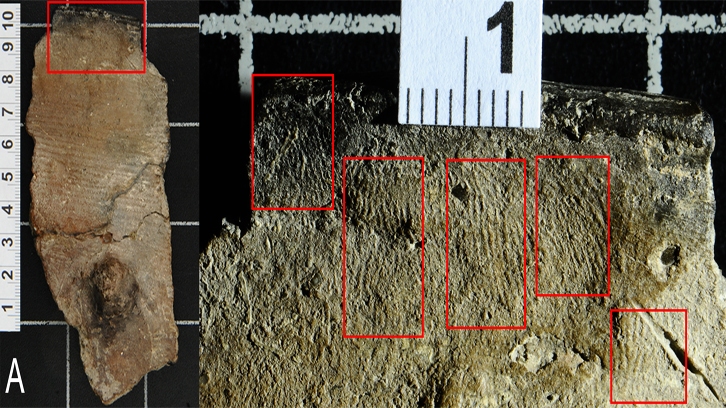Bronze Age individual identified from the analysis of fingerprints

Historically, fingerprints have been important allies of law enforcement to identify criminals. In the last years, the analysis of fingerprints found on ancient objects has enabled to shed light on some aspects of people living in past historical periods.
In this regards, the study the artisan from La Canal dels Avellaners, carried out by a group of researchers of Unitat d’Antropologia Biològica at Universitat Autònoma de Barcelona, and published last January in the journal Trabajos de Prehistoria, presents the analysis of the fingerprints observed on a ceramics vase from the Bronze Age, found in La Canal dels Avellaners, Berga.
A fingerprint is a visible impression of the epidermic crests (protruding part) and the interpapillary grooves of the fingers. Once they have been formed in the fetus, and in absence of serious skin injuries, fingerprints do not change throughout the life of individuals. Moreover, every person has a unique pattern; not even twins have the same pattern. These two characteristics make them essential during identification processes.
To be able to fully identify someone, the fingerprints need to be compared with those of the victim or suspect. In ancient fingerprints, a full identification if almost impossible, as there are not records of fingerprints of individuals from other times, and so the comparison cannot be made.
Nevertheless, several studies on ancient fingerprints have been able to shed light on some aspects of the identity of the individuals, such as sex and age. These are determined from the width of the epidermic crest, which grows as the size of the hand increases and stabilises in adults. This is therefore a good indicator of age since birth until adulthood (when the hand stops growing) and of sex in adulthood (because hands in males are in general bigger than in females).
The analysis of the fingerprints found in the ceramic vase of La Canal dels Avellaners indicated that they belonged to an adult man. This was probably who actually crafted the piece.
Although it was buried during 3,500 years, this ceramic vase provided relevant information to researchers. This kind of analysis are not only important in archaeological investigations, but also in forensic cases, as they enable to determine sex and age from fingerprints of unknown origin.
Unitat d'Antropologia Biològica
Facultat de Biociències
assumpcio.malgosa@uab.cat
References
Virginia Miguez, Pere Ibáñez-Gimeno, Josep Carreras, Josep Liria, Assumpció Malgosa. “L’artesà de La Canal dels Avellaners (Edat de Bronze, Barcelona): anàlisi d’empremptes dactilars”. Trabajos de Prehistoria. 73 (1). 2016: 147-159.


